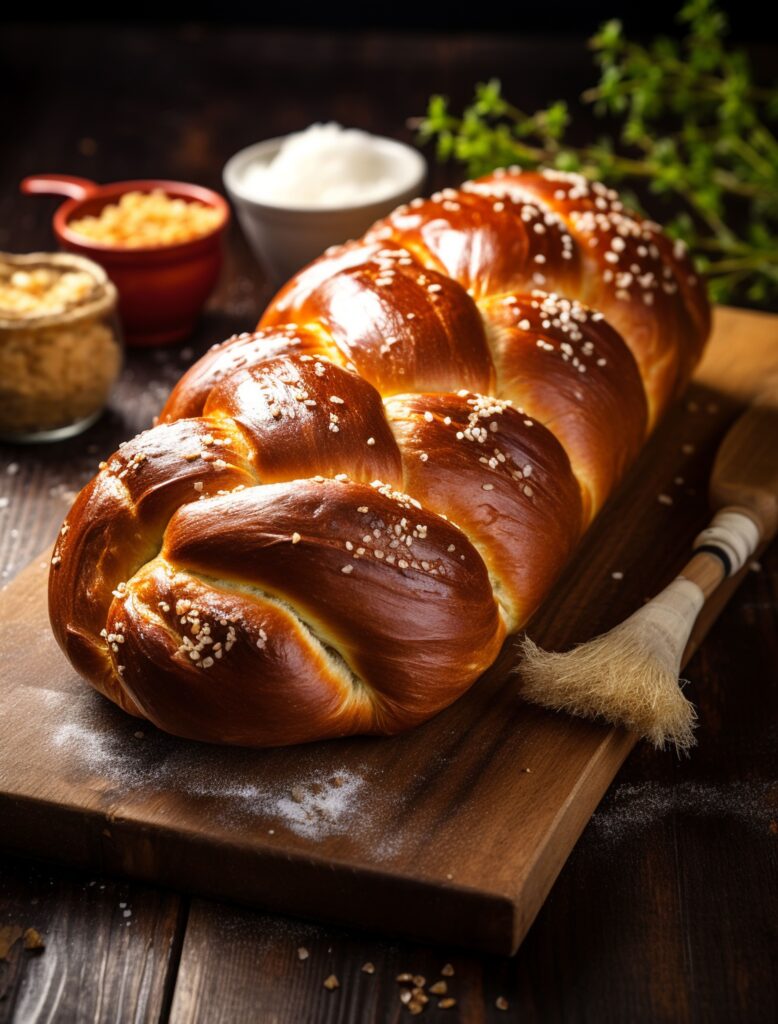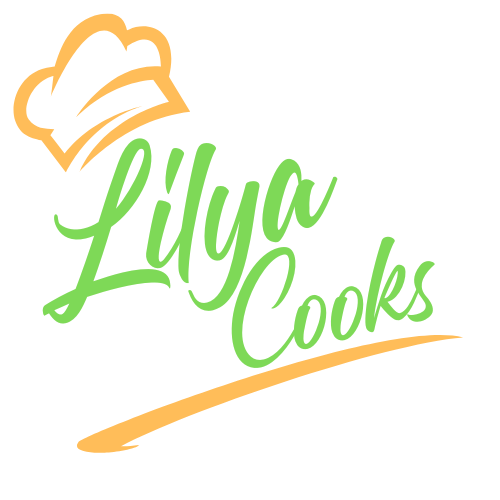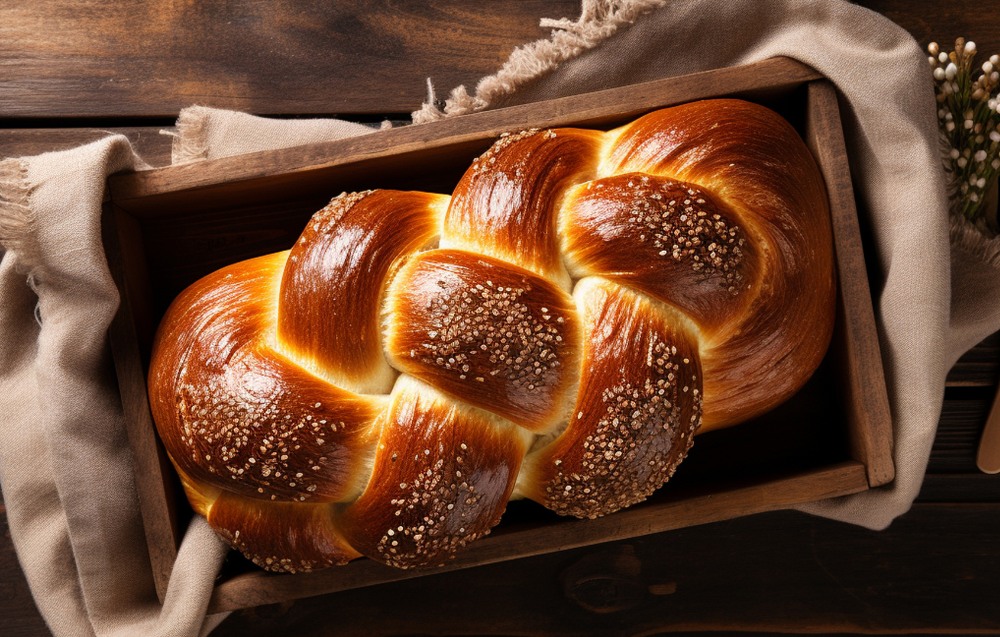The Key to Gluten-Free Baking is unlocking a world of delicious possibilities! Whether you’re someone with celiac disease, gluten sensitivity, or just looking to explore a healthier lifestyle, gluten-free baking has something special for everyone. But let’s be honest—baking without gluten can feel like diving into the deep end without a floatie. It’s tricky, sure, but once you get the hang of it, it’s as rewarding as biting into a warm, soft cookie straight out of the oven. So, let’s dive in and uncover the secrets to mastering gluten-free baking!
If you’re looking for inspiration, check out Gluten-Free Breakfast Casserole Made Simple and Delicious for a breakfast treat that pairs beautifully with homemade gluten-free bread.
Introduction to Gluten-Free Baking
What is Gluten-Free Baking?
Gluten-free baking is exactly what it sounds like—creating delicious baked goods without using gluten. Gluten is a protein found in grains like wheat, barley, and rye. It’s what gives bread its stretch, muffins their fluff, and cakes their perfect crumb. When you remove gluten, you’re essentially pulling out the scaffolding that holds these goodies together.
But don’t let that scare you. With the right techniques and ingredients, you can recreate all your favorite treats without missing a beat. Think of it as a new adventure in the kitchen!

To experiment further, you might explore What Breakfast Meat Is Gluten-Free? Your Complete Guide to create an all-encompassing gluten-free morning spread.
Why Gluten-Free Baking is Gaining Popularity
You’ve probably noticed the gluten-free craze popping up everywhere, from supermarket aisles to trendy cafes. But why is it such a big deal? For starters, more people are discovering gluten-related health issues. For others, it’s simply a lifestyle choice, as gluten-free options are often perceived as healthier or easier to digest.
Moreover, with the rise of clean eating and the push for whole, natural foods, gluten-free baking has found its moment in the spotlight. And guess what? You don’t have to compromise on flavor to go gluten-free.
Health Benefits of Gluten-Free Baking
The Key to Gluten-Free Baking isn’t just about avoiding gluten—it can actually open the door to healthier choices. By using alternative flours like almond, coconut, or oat, you’re packing your baked goods with extra nutrients like fiber, protein, and healthy fats. Plus, gluten-free options often cater to a broader range of dietary needs, making them a win-win for everyone.
Understanding Gluten and Its Role in Baking
What is Gluten, and Why is it Important in Traditional Baking?
Gluten is the magic glue that holds traditional baking together. It gives bread that chewy texture and cakes their soft, airy structure. Essentially, gluten creates an elastic network in doughs and batters, helping them trap air and rise beautifully.
Now, when you take gluten out of the picture, things get… let’s say “creative.” You have to mimic that elasticity and structure with alternative ingredients, which requires a bit of experimentation and finesse.
For related baking insights, consider exploring Artisan Italian Bread: Your Gateway to Authentic Baking, which dives into techniques for traditional and gluten-free breadmaking.
Challenges of Removing Gluten in Baking
Okay, let’s talk real challenges. Without gluten, your baked goods can turn into crumbly messes or gummy disasters. Ever baked a loaf of bread that felt more like a brick? Or cookies that disintegrated the second you picked them up? Yeah, we’ve all been there. That’s why The Key to Gluten-Free Baking is understanding the right techniques and ingredients to turn those challenges into triumphs.
The good news? These challenges are totally conquerable. All you need is the right mix of ingredients and a sprinkle of patience.
Essential Tips for Baking Without Gluten
Here are a few golden rules to get you started:
- Don’t stick to one flour. Mix different gluten-free flours for the best results. Think of it as building a team—each flour brings its own strength.
- Measure carefully. Gluten-free baking can be more sensitive to ratios, so grab those measuring cups.
- Experiment with binders. Ingredients like xanthan gum, psyllium husk, or chia seeds can help mimic gluten’s binding power.
“Gluten-free baking isn’t about replacing one ingredient with another; it’s about rethinking the recipe entirely.”
Key Ingredients in Gluten-Free Baking
Gluten-Free Flours: Types and Uses
When it comes to gluten-free flours, variety is your best friend. Here are some popular ones and how they shine:
- Almond Flour: Adds richness and moisture, perfect for cakes and cookies.
- Coconut Flour: Absorbs liquid like a sponge, great for dense treats like brownies.
- Rice Flour: A neutral option that works well in all-purpose blends.
- Oat Flour: Adds a slightly nutty flavor and works beautifully in muffins or pancakes.
For tips on enhancing texture and flavor, check out Cookie Cake Bliss: Tips, Tricks, and Toppings You’ll Love.
Binders and Thickeners: What You Need to Know
No gluten? No problem. The Key to Gluten-Free Baking lies in using binders like xanthan gum and guar gum to provide the structure you’re missing. They act like the glue, helping everything hold together. If you’re into natural options, try psyllium husk, flaxseeds, or chia seeds. These ingredients also boost fiber content, giving your baked goods a health kick.
The Role of Starches in Gluten-Free Baking
Starches like cornstarch, potato starch, and tapioca starch are the unsung heroes of gluten-free baking. They add lightness and chewiness to your recipes. Think of them as the “fluffers” in your flour blends—they help create that soft, satisfying texture we all love.
“Starches are like the scaffolding in gluten-free baking—they hold everything up without stealing the show.”
Additional Ingredients to Enhance Texture and Flavor
Let’s not forget about the little extras. Ingredients like yogurt, mashed bananas, or even applesauce can add moisture and depth to gluten-free recipes. These elements also help counteract any dryness, making your treats irresistibly soft and tender. After all, The Key to Gluten-Free Baking is mastering these small but impactful additions for perfect results.
Techniques for Perfect Gluten-Free Baking
Mastering the Art of Mixing
When mixing gluten-free doughs, less is more. Over-mixing can lead to dense, gummy results. A gentle hand and a light touch are key—think of it as coaxing your ingredients to play nicely together.
Handling Gluten-Free Doughs and Batters
Unlike traditional doughs, gluten-free doughs tend to be stickier and wetter. Don’t panic—that’s normal. Use parchment paper or lightly oil your hands to make shaping easier.
Adjusting Cooking Times and Temperatures
Gluten-free baked goods often take longer to cook, so be patient. Keep an eye on your oven and use a toothpick to test for doneness. A good rule of thumb? If it smells amazing, it’s probably close to done.
Common Problems and Solutions in Gluten-Free Baking
Let’s face it: gluten-free baking isn’t without its hiccups. From crumbly cookies to dense loaves, it’s easy to feel like your kitchen experiments are working against you. But don’t worry! Every challenge has a solution, and soon, you’ll discover that The Key to Gluten-Free Baking is perseverance and learning from each attempt to create pro-level treats.
Dry and Crumbly Textures: Causes and Fixes
One common issue in gluten-free baking is dryness. Without gluten’s natural elasticity, baked goods can feel like they’re missing their “glue,” leading to crumbling. Here’s how to tackle this:
- Incorporate Moisture: Add moisture-rich ingredients like yogurt, applesauce, or mashed bananas to help bind and hydrate.
- Use Binders Wisely: Xanthan gum or psyllium husk is your best friend for improving structure.
- Perfect the Ratio: Ensure your flour-to-liquid ratio is balanced. Too much flour? Say hello to crumbles.
For a deep dive into how binders work, check out How to Use Xanthan Gum in Gluten-Free Recipes for essential tips on making your baked goods hold together.
“Dry textures in gluten-free baking are not setbacks—they’re reminders to tweak, adjust, and perfect your recipes.”
Gummy or Dense Results: How to Prevent Them
If your gluten-free muffins feel more like chewy hockey pucks, you’re not alone. This often happens when the batter is too wet or the recipe lacks balance. Here’s what you can do:
- Mix Gently: Over-mixing traps too much air, leading to a dense texture.
- Experiment with Starches: Lighten your flour blend with a bit of cornstarch or tapioca starch.
- Check Oven Temperature: Baking at the right temperature ensures even cooking and prevents gummy centers.
Dealing with Lack of Structure in Baked Goods
Gluten gives traditional baked goods their stretch and structure. Without it, your creations might feel flat or fragile. Here’s how to strengthen them:
- Try Alternative Flours: Almond and chickpea flours are protein-packed and can add stability.
- Eggs are Key: Eggs work wonders as both a binder and a leavening agent.
- Double Down on Binders: Experiment with flaxseed meal or chia seeds as natural, nutrient-dense binders.
For a better understanding of how alternative flours boost nutrition and structure, visit Nutrition Benefits of Alternative Flours and discover the unique properties of each.
Overcoming Flavor Challenges
Let’s be real—some gluten-free flours have a strong or unfamiliar taste. Here’s how to make your treats more flavorful:
- Use Blends: Combining flours dilutes strong flavors. For example, mix earthy buckwheat with mild rice flour.
- Boost with Spices: Cinnamon, nutmeg, or vanilla extract can mask any off-putting tastes.
- Sweeten Thoughtfully: Natural sweeteners like honey or maple syrup add depth and complexity.
Tips for Choosing the Right Gluten-Free Recipes
Not all recipes are created equal, especially when it comes to gluten-free baking. Selecting the right one can mean the difference between success and frustration.
Understanding Recipe Labels
When browsing recipes, look for these key indicators:
- Tested Recipes: Choose recipes that explicitly state they’re tested for gluten-free success.
- Ingredients You Know: If a recipe calls for obscure ingredients, consider whether you’re ready to invest in them.
- Clear Instructions: Gluten-free baking is a science. Precise measurements and detailed steps are a must.
Adapting Traditional Recipes to Gluten-Free Versions
Have a favorite recipe you’re dying to convert to gluten-free? It’s easier than you think:
- Swap Flours Thoughtfully: Replace wheat flour with a gluten-free blend. Start with a 1:1 substitution but be prepared to tweak.
- Incorporate Binders: Add xanthan gum or psyllium husk to mimic gluten’s elasticity.
- Adjust Liquids: Gluten-free flours absorb more moisture, so increase liquids like milk or water slightly.
For more on understanding how celiac disease impacts dietary needs (and why gluten-free recipes matter), check out Understanding Celiac Disease Symptoms.
Baking Tools and Equipment for Gluten-Free Success
Just like any craft, having the right tools makes all the difference. Let’s stock your kitchen with gluten-free essentials.
Must-Have Tools for Gluten-Free Baking
Here’s a shortlist of tools that will make your gluten-free journey smoother:
- Kitchen Scale: Accuracy is everything in gluten-free baking.
- High-Quality Mixer: A good mixer ensures your batter is well-combined without overworking it.
- Non-Stick Mats or Parchment Paper: These prevent sticky gluten-free doughs from clinging to surfaces.
Cleaning Tips to Avoid Cross-Contamination
If you share your kitchen with gluten eaters, cross-contamination is a real concern. Keep these tips in mind:
- Separate Tools: Use dedicated utensils, pans, and cutting boards for gluten-free baking.
- Clean Thoroughly: Wipe down surfaces and wash hands frequently.
- Store Separately: Keep gluten-free ingredients and baked goods away from gluten-containing items.
Gluten-Free Baking for Specific Diets
The beauty of gluten-free baking is its versatility. With a few tweaks, you can cater to all sorts of dietary preferences.
Catering to Vegan and Gluten-Free Needs
For vegan and gluten-free baking, you’re working without gluten and eggs. Don’t worry—there are plenty of workarounds:
- Egg Substitutes: Flax eggs, chia eggs, or applesauce are great options.
- Dairy-Free Options: Swap milk for almond, soy, or coconut milk. Use plant-based butters for richness.
- Flavor Boosters: Since you’re missing eggs, enhance flavor with spices, extracts, or natural sweeteners.
Gluten-Free Baking for Kids
Baking gluten-free treats for kids is all about fun and flavor. Here are some kid-approved tips:
- Involve Them: Let kids help mix or decorate—it makes the process more enjoyable.
- Focus on Favorites: Brownies, cookies, and cupcakes are always a hit.
- Sneak in Nutrition: Use almond or oat flour to add nutrients without compromising on taste.
Low-Sugar and Gluten-Free Options
Looking to cut back on sugar? You can still bake delicious treats:
- Natural Sweeteners: Honey, agave, or coconut sugar work well.
- Fruit Add-Ins: Bananas, apples, or dates can sweeten your recipes naturally.
- Spices and Extracts: Cinnamon, vanilla, and almond extract can give the illusion of sweetness without added sugar.
How to Store Gluten-Free Baked Goods
Congratulations! You’ve baked your gluten-free masterpiece. Now, let’s make sure it stays fresh and delicious. Gluten-free baked goods require a bit more attention when it comes to storage, but with the right tips, you can enjoy them for days—or even weeks!
Best Practices for Freshness
Unlike their gluten-containing counterparts, gluten-free baked goods tend to dry out quickly. Here’s how to keep them at their best:
- Cool Completely: Before storing, ensure your baked goods have cooled fully. Trapping warmth can lead to sogginess.
- Use Airtight Containers: Seal your goodies in airtight containers to lock in moisture and keep them from drying out.
- Store in a Cool Place: Avoid leaving them out in warm or humid areas. Your countertop or pantry is fine for most items, but for extra freshness, consider the fridge.
Freezing and Reheating Tips
Sometimes, you just need to save your creations for later. Freezing is a great option for extending the life of gluten-free treats:
- Wrap Individually: Wrap items like muffins, cookies, or slices of bread in plastic wrap, then place them in a freezer-safe bag.
- Label and Date: Always label your frozen goods to remember when you made them.
- Reheat Gently: When ready to enjoy, reheat baked goods in the oven at a low temperature to restore their texture.
“Freezing is like hitting the pause button on your baked goods—when you’re ready to play, they’ll be as good as new.”
Conclusion: Embracing Gluten-Free Baking
Reflecting on the Joy of Gluten-Free Baking
Gluten-free baking might feel intimidating at first, but with a little practice and a dash of creativity, it becomes an incredibly rewarding experience. You’re not just baking—you’re uncovering The Key to Gluten-Free Baking by problem-solving, experimenting, and crafting something truly special for yourself or your loved ones.
What’s more, gluten-free baking is an opportunity to explore ingredients and techniques you might never have considered otherwise. It’s about learning to embrace the process, celebrating small victories, and laughing off the occasional kitchen mishap (yes, even the burnt cookies).
Encouraging Experimentation and Creativity
The best part of gluten-free baking? There’s no one-size-fits-all approach. Every recipe, flour blend, and oven is a little different, giving you endless opportunities to experiment. Don’t be afraid to try new things. After all, The Key to Gluten-Free Baking is embracing creativity, substituting ingredients, tweaking techniques, and putting your own spin on classic recipes.
“In gluten-free baking, there are no failures—only delicious lessons waiting to be learned.”
And remember, every great baker started where you are now, with a bowl of ingredients and a lot of questions. The key is to keep going, stay curious, and savor the process. After all, the journey is just as sweet as the destination.
Final Thoughts
With these tips and insights, you’re well on your way to mastering gluten-free baking. Whether you’re whipping up a batch of cookies for a family gathering or crafting a loaf of bread for your morning toast, the possibilities are endless. So roll up your sleeves, preheat that oven, and let the gluten-free magic begin!

